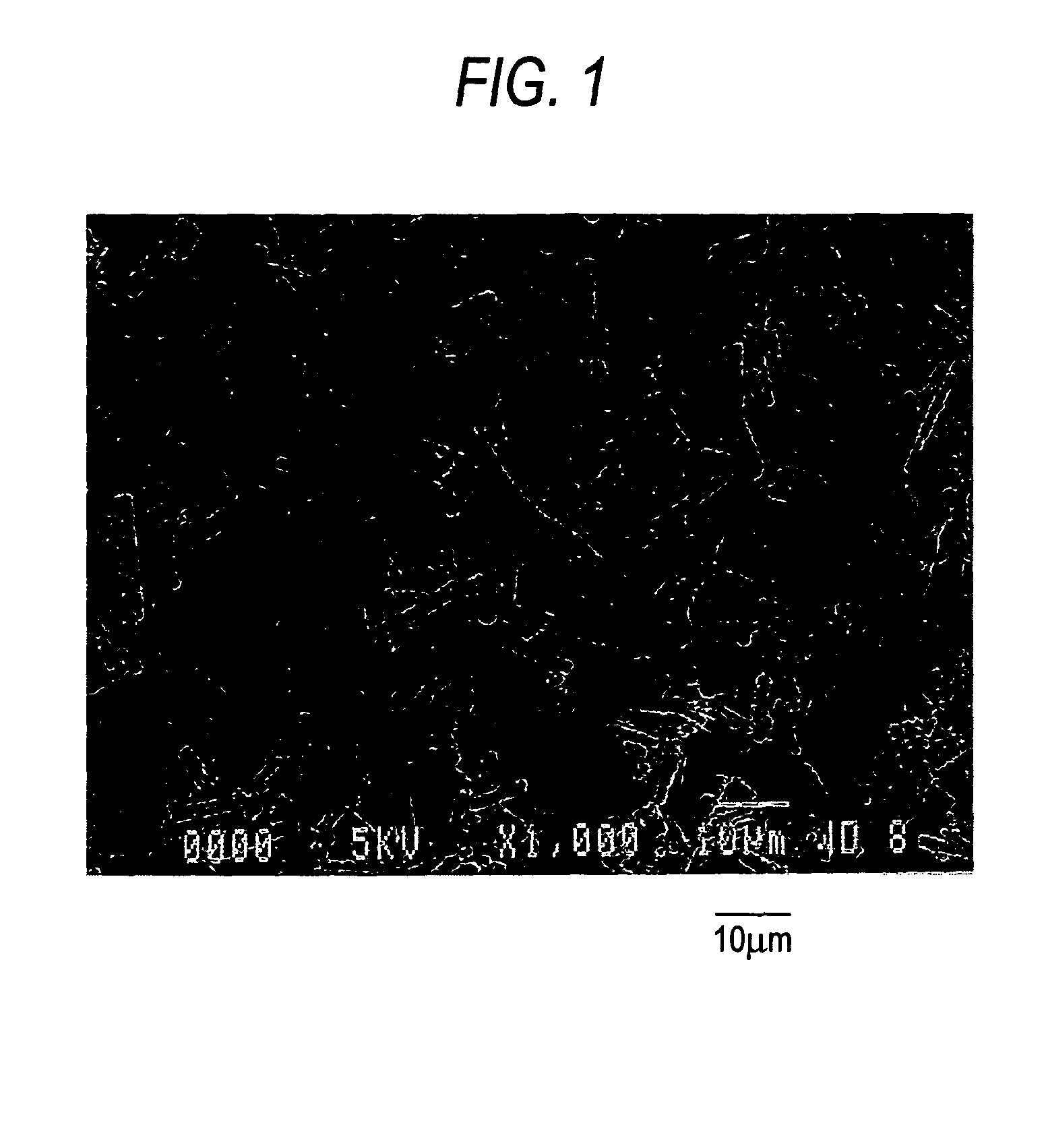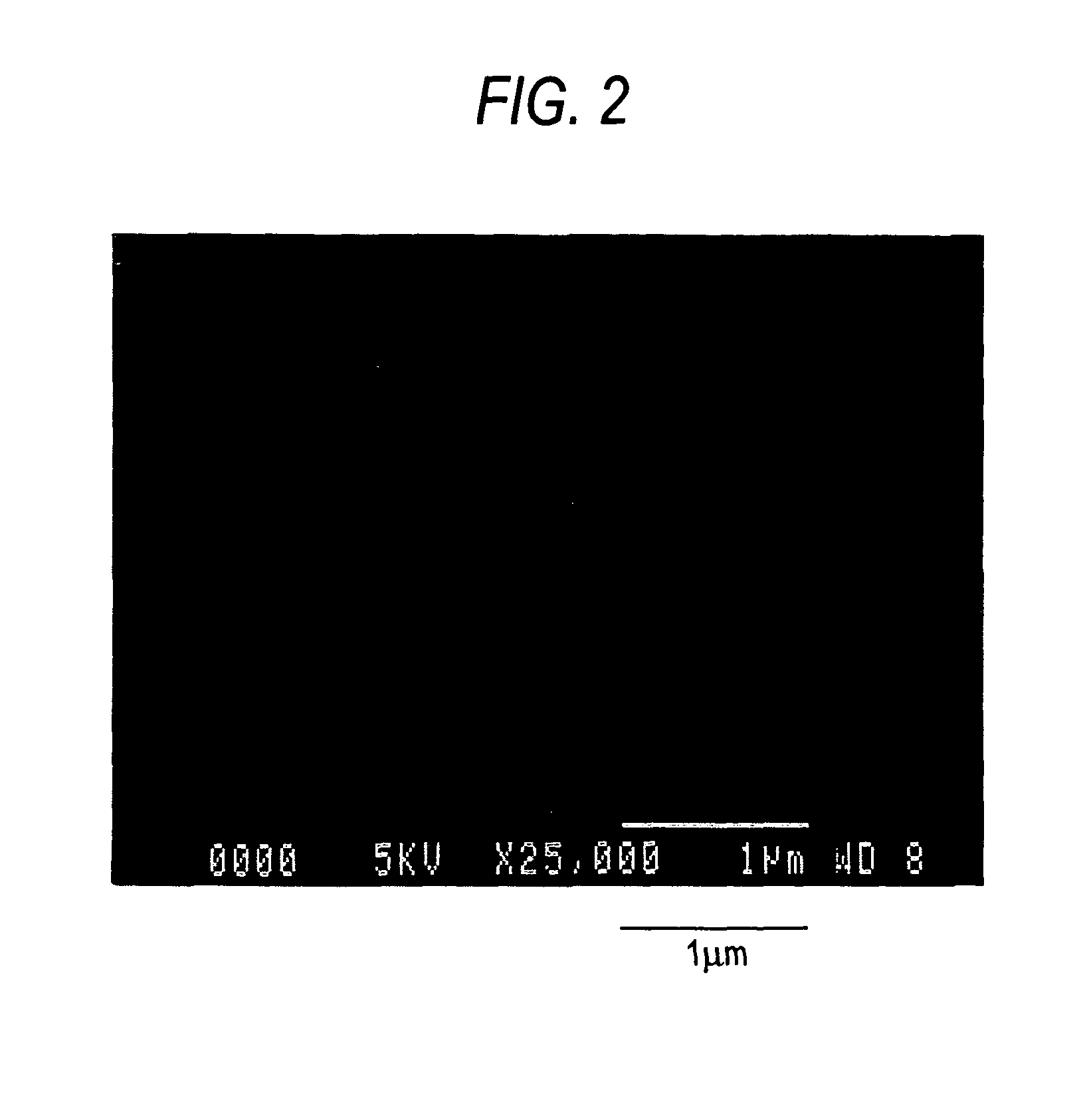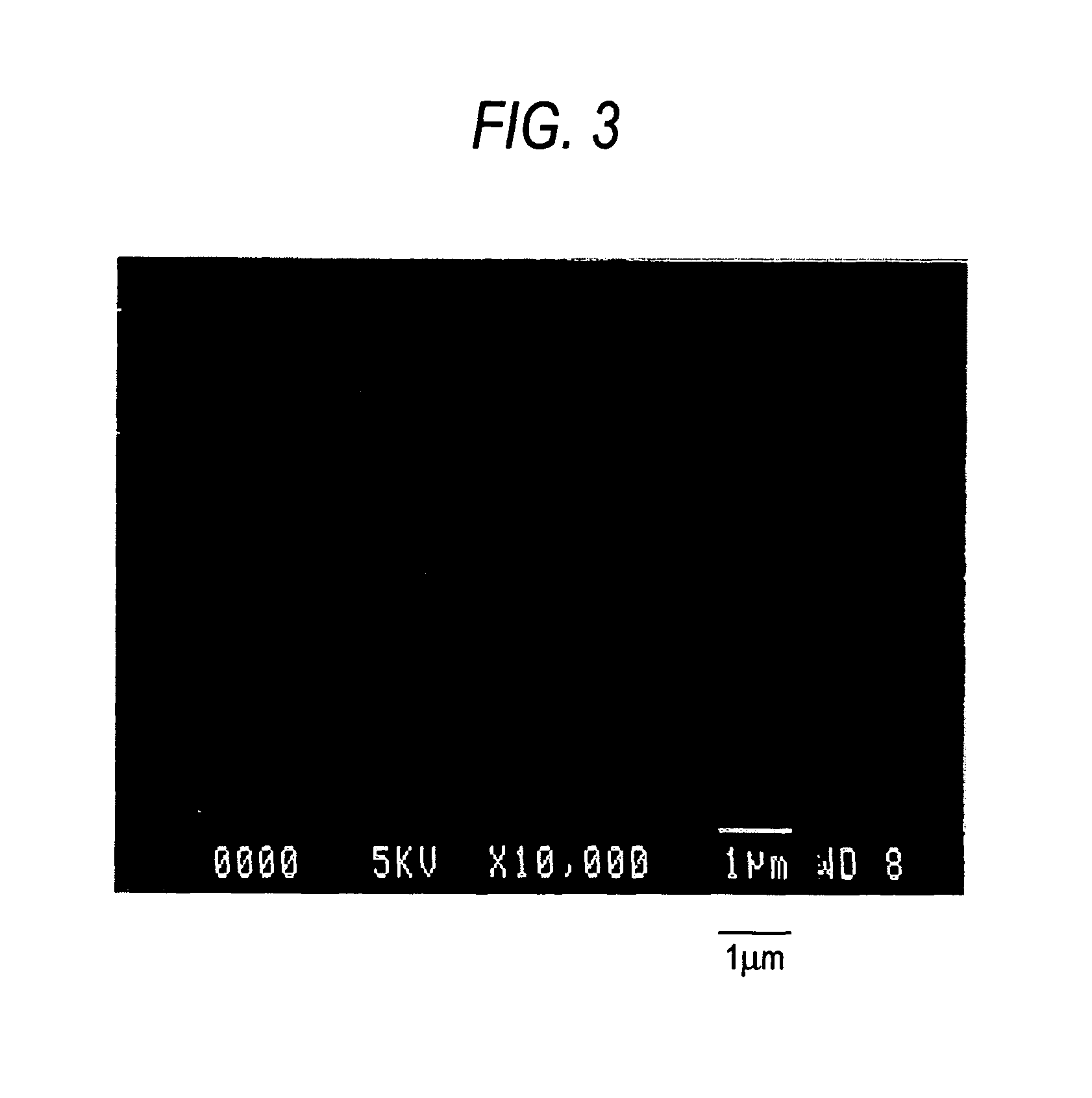Basic magnesium carbonate, production method and use of the same
a magnesium carbonate and production method technology, applied in the field of basic magnesium carbonate, can solve the problems of limited use and far from sufficient satisfaction of performance and use, and achieve the effects of high pore volume, excellent characteristics, and high specific surface area
- Summary
- Abstract
- Description
- Claims
- Application Information
AI Technical Summary
Benefits of technology
Problems solved by technology
Method used
Image
Examples
example 1
Production of Basic Magnesium Carbonate According to S Method
[0157]To 2.0 L of an aqueous solution of magnesium sulfate heptahydrate (125 g / L) adjusted to be 40° C., 0.50 L of an aqueous solution of sodium carbonate anhydride (220 g / L) was gradually added while keeping the temperature at 40° C., and stirred for 50 min. to obtain a normal magnesium carbonate (first step). When the normal magnesium carbonate was observed with SEM, it was determined as being columnar particles having a diameter of 1 to 3 μm and a length of 10 to 50 μm.
[0158]Subsequently, the suspension of the columnar particles of the normal magnesium carbonate obtained in the first step (pH 10.2) was heated, and stirred for 120 min. while keeping the temperature at 55° C. to allow the production of a basic magnesium carbonate (second step). After washing thus resulting product with ion exchanged water and ethanol followed by drying, it was observed with SEM. Thus, it was determined as being aggregated particles of fla...
example 2
Production of Basic Magnesium Carbonate According to S Method
[0159]A solution containing magnesium sulfate generated during the step of flue gas desulfurization according to a magnesium hydroxide method was filtrated to eliminate the solid content, and thereafter, an appropriate amount of ion exchanged water was added thereto to prepare 2.0 L of a 50 g / L magnesium sulfate solution. After adjusting the magnesium sulfate solution to be 50° C., 0.50 L of an aqueous solution of sodium carbonate (210 g / L) was gradually added thereto while keeping at the same temperature, and stirred for 20 min. to obtain a normal magnesium carbonate (first step). When this normal magnesium carbonate was observed with SEM, it was determined as being columnar particles having a diameter of 1 to 3 μm and a length of 10 to 60 μm.
[0160]After filtrating this suspension of the normal magnesium carbonate followed by washing of the solid content with ion exchanged water, the solid content was again dispersed in 2...
example 3
Production of Basic Magnesium Carbonate According to S Method
[0162]To 2.0 L of an aqueous solution of magnesium sulfate heptahydrate (125 g / L) adjusted to be 45° C., 0.50 L of an aqueous solution of sodium carbonate anhydride (220 g / L) was gradually added while keeping the temperature at 45° C., and stirred for 30 min. to obtain a normal magnesium carbonate (first step). When this normal magnesium carbonate was observed with SEM, it was determined as being columnar particles having a diameter of 1 to 3 μm and a length of 10 to 50 μm.
[0163]Subsequently, the suspension of the columnar particles of the normal magnesium carbonate obtained in the first step (pH 10.5) was heated, and stirred for 120 min. while keeping the temperature at 55° C. to allow the production of a basic magnesium carbonate (second step). After washing thus obtained product with ion exchanged water and ethanol followed by drying, it was observed with SEM. Thus, it was determined as being aggregated particles of fla...
PUM
| Property | Measurement | Unit |
|---|---|---|
| length | aaaaa | aaaaa |
| length | aaaaa | aaaaa |
| length | aaaaa | aaaaa |
Abstract
Description
Claims
Application Information
 Login to View More
Login to View More - R&D
- Intellectual Property
- Life Sciences
- Materials
- Tech Scout
- Unparalleled Data Quality
- Higher Quality Content
- 60% Fewer Hallucinations
Browse by: Latest US Patents, China's latest patents, Technical Efficacy Thesaurus, Application Domain, Technology Topic, Popular Technical Reports.
© 2025 PatSnap. All rights reserved.Legal|Privacy policy|Modern Slavery Act Transparency Statement|Sitemap|About US| Contact US: help@patsnap.com



